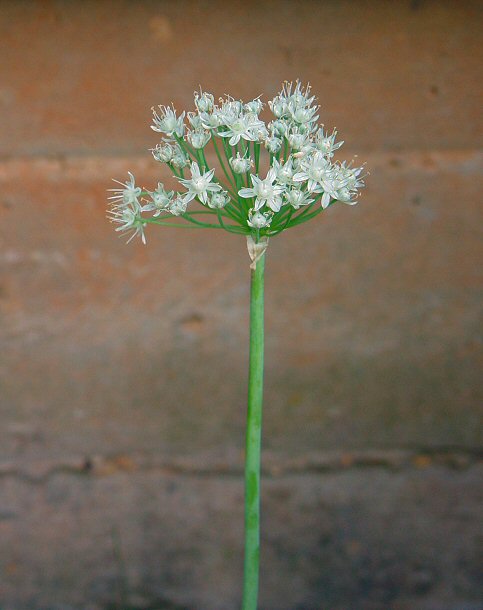Allium cepa L.
Onion

Introduced
CC = *
CW = 5
MOC = 8
© DETenaglia
Allium cepa L.Onion | |
 |
Introduced CC = * CW = 5 MOC = 8 |
© DETenaglia |
|
Family - Liliaceae Habit - Perennial forb from a bulb. Stems - Erect, to 1.5 m, inflated near base, glabrous. Leaves - Restricted to basal half of stem, to 50 cm long, 15 mm in diameter, linear, terete, hollow, usually glaucous. Inflorescence - Umbels with any combination of flowers and sessile bulblets. Flower stalks much longer than flowers.
Flowers - Perianth bell-shaped. Tepals 4-7 mm long, narrowly ovate, deep pink to greenish white.
Fruits - Capsules 3-5 mm long, globose to depressed-globose, 3-lobed, the angles or lobes with a thickened ridge. Flowering - May - July. Habitat - Cultivated and uncommonly escaped to waste ground. Also persistent around old homesites. Origin - Native to southwestern Asia. Lookalikes - Other species of Allium. Other info. - This is the common culinary onion. This species can be found growing wild in just a handful of Missouri counties but it is cultivated nearly throughout the state. It almost never escapes far from cultivation and usually will not persist long after cultivation. There are many different varieties grown around the world for food and for ornament. Some varieties produce showy flowers, some produce tasty, large bulbs and few or no flowers. Agricultural onions are categorized as long- or short-day types, corresponding to those most appropriate to southern or northern latitudes, respectively. The formation of large bulbs is triggered by the day length reaching a certain value predetermined by the onion type. Photographs taken in the Ozark Scenic Riverways, Shannon County, MO., 6-24-03. |